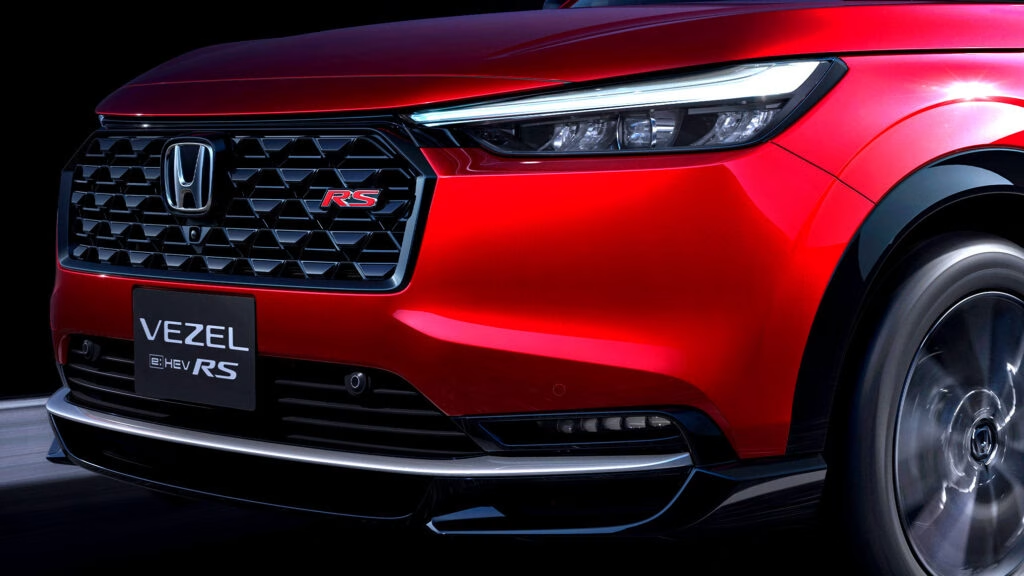What makes the Honda Vezel e:HEV RS stand out in Japan’s crowded SUV market?
Honda’s Vezel e:HEV RS just landed in Japan, and it’s not your average compact SUV. If you’re picturing a run-of-the-mill family hauler, think again. The RS badge signals a sharper, sportier take on the Vezel formula, blending subtle aggression with real-world practicality. For drivers who want a little more edge—without sacrificing daily comfort—this new trim is worth a closer look.
How does the RS trim change the look and feel of the Vezel?
At first glance, the Vezel RS doesn’t scream for attention, but the details add up. There’s a new grille with a prominent RS emblem, plus dark chrome inserts on the bumpers and side skirts that give it a more planted, athletic stance. The 18-inch diamond-cut alloy wheels fill out the arches nicely, hinting at the RS’s performance aspirations. Five exterior colors are on offer, with the standout being Premium Crystal Red Metallic—a shade that pops in sunlight but avoids looking flashy.
Step inside, and the RS theme continues. The cabin gets a moody, dark makeover, with red stitching and trim accents that feel more hot hatch than family SUV. The steering wheel and gear selector are wrapped in leather, the roofliner goes black, and the seats feature Lux Suede inserts with anti-slip properties. It’s a small touch, but one you’ll appreciate on twisty roads or during spirited driving.
What features come standard, and what’s optional?
Honda didn’t skimp on equipment. The Vezel RS ships with full LED headlights, heated front seats and steering wheel, dual-zone climate control, wireless charging, a hands-free tailgate, and the full Honda Sensing suite of advanced driver aids. That means adaptive cruise, lane keeping, collision mitigation—the works. The only real options are a multi-view camera and a 10-speaker premium audio system. For most buyers, the standard kit will feel downright luxurious.
Does the RS badge mean more power or just sportier handling?
Here’s where expectations need a quick reality check. The Vezel e:HEV RS doesn’t get a power bump. It sticks with Honda’s proven 1.5-liter hybrid setup, pairing a gasoline engine with two electric motors for a total of 129 horsepower and 253 Nm of torque. You can choose between front-wheel or all-wheel drive, depending on your needs.
But the real story is in the chassis. Honda lowered the suspension and recalibrated the electric power steering, making the RS feel more direct and responsive. The ride height drops from 1,580 mm to 1,545 mm, which isn’t just for looks—it actually helps the Vezel fit into Japan’s notoriously tight multi-story parking garages. A small tweak, but a big deal for city dwellers.
How does the Vezel RS compare to other trims and rivals?
The RS sits above the e:HEV Z trim, carrying a premium of about ¥480,700 (roughly $3,300 USD). For that, you get the sportier looks, sharper handling, and a more upscale interior. It’s not a hot-rod, but it’s easily the most engaging Vezel you can buy. Against rivals like the Toyota Yaris Cross GR Sport or Mazda CX-30, the Vezel RS holds its own, especially if you value hybrid efficiency and Honda’s reputation for reliability.
Is the Vezel RS a good value for Japanese buyers?
At ¥3,748,800 ($25,500) for FWD and ¥3,968,800 ($27,000) for AWD, the Vezel RS isn’t cheap, but it’s competitive given the equipment and hybrid tech on offer. For context, hybrid SUVs in Japan have seen steady demand, with the Japan Automobile Dealers Association reporting a 12% year-over-year increase in hybrid SUV registrations in 2023. Honda’s e:HEV system is well-regarded for its smoothness and real-world fuel savings, making the RS a smart pick for urban and suburban drivers alike.
What’s the big takeaway for drivers considering the Vezel e:HEV RS?
Honda’s Vezel e:HEV RS isn’t about chasing lap times or headline-grabbing horsepower. Instead, it’s a thoughtful evolution of the compact SUV, blending style, comfort, and a dash of sportiness in a package that fits real-world needs. The lowered ride height isn’t just for show—it’s a nod to the realities of Japanese city life. The big takeaway? The RS isn’t about perfection—it’s about smarter adjustments. Start with one change this week, and you’ll likely spot the difference by month’s end.

